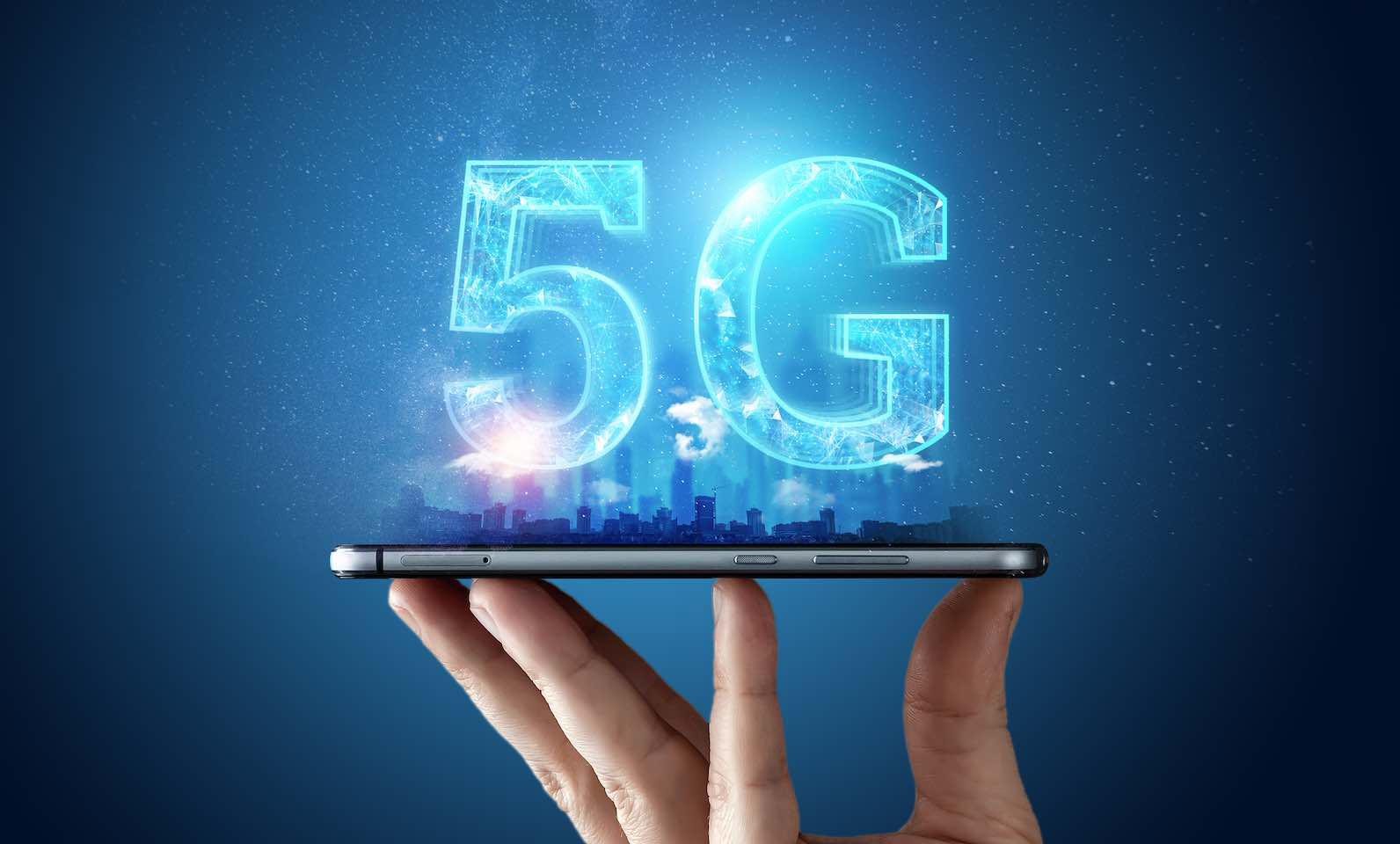The next generation of mobile internet is almost upon us, and unlike fifth generation warfare, 5G internet actually exists. Zong and Jazz have already conducted 5G speed tests and now the Pakistan Telecommunication Authority (PTA) has also allowed non-commercial trials in line with policy directives from the government.
But spoiler alert, this might not be as big of a deal as when the 3G and 4G wave hit the country, or at least. Before these new bandwidths, internet usage was different in the country, and mobile data was a remote concept. It has been the rise of 3G and 4G that has allowed the proliferation of such things as google maps and ride hailing apps.
As revolutionary as 3G and 4G might have been, most people in possession of smartphones have gotten used to this new spectrum of communication. Their conception of 5G technology is that it will be faster for video streaming, with better upload and download speeds. However, there are other implications to this new technology, including technical differences and possible requirements for usage that will have a resulting impact not only on telecommunication but also on other aspects of our society.
To this end, Profit wanted to do a what’s what of 5G internet, a sort of basic crash course into the technology and all that comes with it. To debunk a few myths surrounding 5G, estimate its expected launch date, its possible health impacts, and the potentially tricky socio-political impacts of 5G technology in Pakistan, we sat down with technical experts dealing with mobile phone technology from telecom companies and government departments, took account of reports and permission announcements by PTA, and consulted technology aficionados to learn more about Fifth Generation of wireless technology. A report published by NIS Cooperation Group in the European Union, titled “EU coordinated risk assessment of the cybersecurity of 5G networks” was also consulted along with the expectations overview from general citizens.
The lay of the land
On August 22, 2019, China Mobile Pakistan (CMPak) Zong conducted Pakistan’s first 5G trials culminating on first official 5G video call testing on January 6, 2020 reaching the exhilarating speed of over 1.5 Gigabytes per second (Gbps). More on what 1.5 GB means for a video call later. Telecom operator Jazz, Pakistan Mobile Communications Limited (PMCL), followed suit on January 4, 2020 with its first 5G test attaining speed of 1.43 Gbps.
Amidst the rising competitive heat between the two operators, the Ministry of Information Technology and Communication announced, on January 7, formation of a committee for the auction of 5G spectrum licenses in the country. This committee would comprise of members from all four telecom operators in Pakistan – Jazz, Zong, Telenor and Ufone – and will have members of IT ministry and an officer of the Frequency Allocation Board.
Three days later, on January 10 Pakistan Telecommunication Authority (PTA) issued, “Framework for Test and Development of Future Technologies (Particularly Fifth Generation 5G) Wireless Networks in Pakistan” allowing non-commercial trials of 5G under limited environment for six months.

But for people licking their lips and getting ready to take 5G out for a spin as soon as possible, we have some bad news. If you are expecting 5G technology to be up and running in Pakistan in a matter of weeks or even months, you are mistaken. Despite the grand promises from this new technology, even the United States only has 5G coverage in 25 cities. On top of it, the kind of 5G available for now is some kind of speed boost over 4G instead of the full fledge 5G services. In China, only 50 cities have 5G coverage. There is a long way to go for the world, and an even longer way for Pakistan, and as we will see, not without reason. There is a mountain of legislation to be done before we gain access to the next generation spectrum, not to mention the immense expenditure required not only for establishing but also running the required equipment for 5G.
Next comes the even worse news. If you own a smartphone that costs less than Rs 100,000, there is even lesser reason for you to be excited about 5G coming to Pakistan, since for now the only devices available in the country that can support this technology are very few and very expensive, not that they can provide any 5G service without the technology being put in place first.
But here’s the rub, even though it is far away and inaccessible, 5G will prove to be a lot more than just means for mobile communications and thereby has far reaching impacts on civilization as we know it. The EU and the developed countries have already started taking into account the far reaching impacts of 5G and Pakistan needs to inculcate their findings and conduct its own research applicable to our citizens if the advantages of the newest spectrum are to be obtained without risking the disruption of the socio-political dynamics of the country.
But what is this 5G technology, and why is it going to cause such a massive change? What can you expect, by when should you expect it, and more importantly, what hopes can you have from this new technology?
The history, the present & the future of 5G
5G stands for Fifth Generation of wireless technology – or more easily mobile communication technology. 5G is developed to accommodate the needs of gigantic growth in data and ever rising need of connectivity in modern societies. The Internet of Things (IoT) with billions of connected devices and many of today and tomorrow’s inventions also require faster and more reliable internet. The process to reach here, however, has been tedious.
It started from Analog Cellular services in 1979 – the first generation of mobile phones featuring large and heavy handsets with extendable or fixed antennas providing merely voice calling and text messaging services.
Second generation brought GSM and CDMA technology in 1991 – which in Pakistan you might remember from the time SIM cards became all the rage. This technology also brought us GPRS and Edge in late nineties which brought internet to our phones along with the standard waiting periods ranging from several seconds to several minutes that come with a speed maximizing on 380 kilobytes per second (Kpbs).
Third Generation, 3G, came in 1998 globally, and was the ‘fastest’ internet, which at the time of its arrival jumped the mobile internet speed from few hundred kpbs to several Megabytes per second (mbps), and that most of us might remember as the true internet revolution in Pakistan. It brought mobile broadband and led for the first time to video streaming on our mobile phones and enabled a generation of online gamers to explore a whole new world of internet gaming.
4G, fourth generation or LTE, hit the world in 2008, and took almost another decade to touch Pakistan. It is still a relatively latest concept in Pakistan with one carrier in Pakistan Ufone only starting services a couple of months ago. Here we have the speed of several hundred mbps, rolling out at a time comfortably coinciding with the arrival of Netflix in the country.
Now we are talking about the fifth generation, since 2019, that holds the potential of several Gigabytes per second (gbps) speed for high definition (HD) and high resolution video calling, quicker than ever uploading and downloading, and – if said in technical terms – the quickest rate of feedback from a request generated through internet. This last idea is called “latency” and lower latency means lower time needed for devices to respond to each other over a wireless network. For better understanding, a typical 3G device has a response time of 100 milliseconds or one-tenth of a second, 4G brings a latency of 30 milliseconds, while 5G is expected to reach as low as 1 millisecond. For a user this means that it will take more time to say Facebook than it will take a 5G enabled mobile to open the Facebook application on their screens.
To describe it for the more tech savvy (you should skip this and the next two paras if you aren’t a techie), the move towards 5G comes through Software Defined Networks (SDN) and Network Functions Virtualisation (NFV) technologies. The European Union report highlights that this will represent a major shift from traditional network architecture as functions will no longer be built on specialised hardware and software. Instead, functionality and differentiation will take place in the software.
Secondly, ‘Network slicing’ in 5G will make it possible to support to a high degree the separation of different service layers on the same physical network, thus increasing the possibilities to offer differentiated services over the whole network. Network slicing features will require the roll-out of a new core network, i.e. replacing the 4G core network with a 5G core network, following the so called “Stand-Alone” network architecture.
Thirdly, ‘Enhanced functionality’ at the edge of the network and a less centralized architecture than in previous generations of mobile network: this is reflected both in enhanced connectivity options within the radio access network, and in support for ‘Mobile Edge Computing’, which allows the network to steer traffic to computing resources and third-party services close to the end-user, thus ensuring low response times.
What will you need to be able to use 5G?
For starters, the government, telecom operators, and users are all in desperate need for a tech upgrade for the changing times, and one that will mean coughing up a significant amount. As technology journalist and contributing editor of ZDNet website Scott Fulton III put it, “It is a capital improvement project the size of the entire planet, replacing one wireless architecture created this century with another one that aims to lower energy consumption and maintenance costs. It’s also a huge gamble on the future of transmission technology, doubling down on consumers’ willingness to upgrade.”
There are several stakeholders involved in 5G networks infrastructure, including mobile network operators (MNO), suppliers of MNOs (manufacturers of telecom equipment and third party suppliers for cloud infrastructure, security contractors, transmission equipment manufacturers and so on), content providers, and end users. We will discuss challenges from 5G later in this article, but for now it is notable that each of these stakeholders not only present a contributing party to cybersecurity of 5G but also a potential entry point for factors of attacks.

To better understand the needs of 5G network, we first have to understand that our modern telecommunication is being done on electromagnetic radiation involving radio waves and microwaves. When it comes to the internet, the frequency, wavelength, and ability to transfer data are the factors that count. With 5G we get higher frequency, shorter wavelength, and higher bandwidth meaning lots of data transfer. However, all this comes with shorter range for 5G (4G has long range) which means a lot more feeders are required for covering any particular area for 5G than they are needed for 4G or 3G.
Not only this, but true application of 5G services can only happen with the perception that 5G has nearly 99.99999 percent availability, which only culminates into a very large number of required feeders. In more technical terms, 1000x bandwidth and 10-100x number of connected devices are needed. Add to this the battery life requirement of up to ten years for low power devices, and we have substantial investment requirements on our hands. Of course there is a flipside to this, where the EU report estimates worldwide 5G revenues to reach approximately GBP 225 billion (more than PKR 45 trillion – 45 with twelve zeros), but for Pakistan we might need to look at this equation with more skepticism. The key factor here being the number of consumers willing to invest in better phones and pay higher bills to gain fractionally better video quality while watching whatever follows Game of Thrones.
Then there is the point that different 5G use cases – eMBB [Enhanced Mobile Broadband], URLLC [Ultra Reliable Low Latency Communications], mMTC [massive Machine Type Communications] and FWA [Fixed Wireless Access] – have different requirements when it comes to bandwidth, latency, mobility, security, reliability and pricing.
Scott writes, “Early 5G deployments are concentrating on traditional more consumer-oriented areas such as eMBB and FWA, which are based on the finalised 3GPP Rel-15 standard, and can utilise a lot of existing 4G LTE infrastructure. But phase 2 of 5G will be based on a standard which is still developing (Rel-16 standard), and will require new spectrum and infrastructure to support advanced business use cases like URLLC and mMTC.”
“Enabling all this requires a cloud-native, service-oriented architecture that supports network slicing, where multiple virtual networks coexist on the same physical infrastructure, leveraging technologies like software-defined networking (SDN) and network function virtualisation (NFV)”.
If this is all too technical, then perhaps it would suffice to say that you will need Samsung Galaxy S10 5G (costing approx Rs 190,000), Huawei Mate X (Rs 260,000), Oppo Reno 5G (Rs 100,0000), LG V50 ThinQ (Rs 140,000), or the cheapest one available yet Xiaomi Mi Mix3 (Rs 70,000) if you want to own a handset that can entertain 5G technology. However, since Apple is yet to launch a 5G enabled iPhone, it is alright if you haven’t gotten there yourself. Not to mention that Apple might be on its twelfth model with 5G by the time 5G comes to Pakistan for real and there might be several cheaper alternatives available at the time too.
To wrap up the subject on requirements for 5G, it is pertinent to mention that even when 5G starts to roll out in Pakistan, the speeds available would be much less than those that were achieved in Zong and Jazz tests. For now PTA has allowed only limited scale testing which is being done under strict and ideal conditions. Therefore, it is still a long way to go before we have the necessary equipment, software and hardware, and user related technical capabilities for 5G in Pakistan.
Use cases for 5G
The first use case for 5G all over the world is IoT – or in layman terms ‘machine to machine communication’. This will be on a scale never experienced before and without requiring human intervention at minimum if not at all. This holds potential for revolutionizing modern industrial processes and applications in a way we have never seen before, in fields of communications, agriculture, manufacturing, and so on.
Second use case comes with control of devices – also relatively more applicable for the developed world than for Pakistan – such as control of drones, industrial robotics, self-driven cars, and safety systems. With such technology accessible to masses even remote medical procedures and treatments will all become possible.
Third, enhanced mobile broadband will mean significantly faster speeds and greater capacity to enable a truly connected world. This is what most Pakistanis generally understand from 5G, which in practical terms means better internet connection on the move, no need for cables and modems to be installed by your internet service provider, and in terms of media coverage better outdoor broadcast applications without the need of broadcast vans. This means that you will not see large vehicles with satellite dish antennas and brightly painted channel names outside the Supreme Court when a nationally renowned case is being heard.
Potential impacts of 5G – health, politics, censorship and all that
Many people interviewed by Profit expressed apprehensions over potential health hazards brought by 5G waves saturating Pakistan’s air. These fears arise from the fact that wireless telecommunication involves radio waves and microwaves, which traditionally have a negative reputation – who hasn’t seen skull and bones and ‘danger’ labels on laboratory equipment in schools and X-ray rooms in hospitals? Some of us have grown up with instructions on not to stand directly in front of the microwave oven when it’s heating our food. The truth, however, is rather pleasant, despite the fact that the International Agency for Research on Cancer (IARC) terms radio frequency as ‘possibly carcinogenic’.
For starters, IARC’s classification of possible carcinogens also has coffee in it along with compounds used to dye clothes, and silicon dioxide which is one of the major components of regular sand. Secondly, the World Health Organization (WHO) has said that ‘no health effects have been proven yet’ of mobile phone usage and related waves. To get into further detail, electromagnetic waves only become dangerous when they reach the frequency of 1,000,000 Gigahertz (GHz) or more. That’s when they become ionized and hazardous to human cells with potential of causing cancer or mutations – as is the case of atomic explosions.
In comparison, the frequency of waves generated by a typical WiFi in a Pakistani household is from 2.4 to 5 GHz, for 4G it is less than 6GHz, and for 5G it is usually 80 GHz but can go up to 300 GHz. However, even at that point it doesn’t become ionized and therefore poses no such risk to health. The bigger dangers of 5G come from technological warfare as well as governmental regulations, or lack thereof.
According to the EU report, “From a security perspective … such increased reliance on software, and the frequent updates they require, will significantly increase the exposure to the role of third-party suppliers and the importance of robust patch management procedures … it also means that the current 4G core network will need to be replaced – and that means huge replacement costs and new equipment across the whole network.”
The report adds, “Some sensitive functions currently performed in the physically and logically separated core are likely to be moved closer to the edge of the network, requiring relevant security controls to be moved too, in order to encompass critical parts of the whole network, including the radio access part.
If not managed properly, these new features are expected to increase the overall attack surface and the number of potential entry points for attackers, as well as increase chances of malicious impersonation of network parts and functions.”
Even though there are lots of security components already included into 5G considering the experience and challenges noted from other forms of internet in the yester years, there are still newer challenges. The report notes, “These new security features will however not all be activated by default in the network equipment, and therefore their implementation will greatly depend upon how the operators deploy and manage their networks.”
There is also a strong link between the supplier and a government of a given third country especially with regards to the third country’s legislation, and especially where there are no legislative or democratic checks and balances in place, said the EU report, “…the ability for the third country to exercise any form of pressure, including in relation to the place of manufacturing of the equipment.”
Coming to less technical and less financial consequences, the far greater access and connectivity brought by 5G will also come with its fair share of threats and challenges for the government as well as citizens of Pakistan. It might be difficult for this publication to define lawful and unlawful surveillance and censorship, but there will be undeniable impacts on both these fronts.
5G enabled surveillance equipment will be far more efficient which will be instrumental in fight against terrorism but at the same time, in absence of proper controls it holds the potential to become devastating through cyber attacks and data leakage. On the flipside, the same surveillance can be misused or used out rightly to censor media or social media content.
Similarly, from the users’ end, unlimited reach to the world of internet has rarely brought about sharp-minded entrepreneurs from Pakistan and has more frequently resulted in disputes and online and physical threats and attacks. Cyber security bill, as it is today, remains unfinished in the halls of the parliament and we continue to debate whether to become party to international conventions of social media and information sharing, let alone draft a comprehensive bill outlining limits of operations by the users as well as authorities.
In the myriad of issues related to telecommunications already prevalent in the country, the race to 5G is a lot like putting the cart before the horse than it is to prepare the infrastructure, investment environment, and user awareness about fifth generation of wireless mobile services.
There is a lot to gain from 5G, but in the absence of proper legislation, economic conditions conducive to implement such technology, and clear definition of roles to be played by all relevant stakeholders, we remain farther behind in technology than we might realize.






















There is need to re assess the health hazards posed by 5G. And data need to be assessed keeping in view the New Corona Virus effects in regions and countries where 5G is being rolled out. It is reported in several social media videos that dangerous Radiofrquencies are observed on devices where 5G is switched on, and people are protesting against it especially in european regions. In addition several birds are also found dead on roads in UK alone due to 5G radiowaves.
No one talks about the heath hazards ? why are people so addicted to mobiles they dont seem to care ?
5G is very dangerous for life.
Save life we don’t want 5G in whole world.
It Will cancers etc and most diseases which will be non stopable and that will finish our whole world and all lives.
So please save lives of human,wild life will be more effectively from that.
ALLAH save our lives 😭
Norway has 7G and it does not kill or harm any life on the earth how can you say that 5g will effect on humans and animals??
@Syeda Masooma plz study non-thermal effects of radio waves on humans
5G
[…] — to profit.pakistantoday.com.pk […]
Is 5G good?
Pakistan needs 5g otherwise we look like backward people to the rest of the world
Pakistan does not *need* 5G, 4G or any other kind of G. The so-called “backward places” are safe places these days.
Watch *The Secret Behind 5G Technology*–a documentary by Sacha Stone. It will open your eyes.
5G waves frequency is very very low, its not cause cacer, how can u ask that a 300 mahz frequency can cause a cancer.
When 5g will come in pakistan officially
Comments are closed.